-
Definition
-
Scope of the Study
- Research Objective
- Assumptions
- Limitations
-
Introduction
-
Primary Research
-
Secondary Research
-
Market Size Estimation
-
Drivers
-
Restraints
-
Opportunities
-
Challenges
-
Macroeconomic Indicators
-
Technology Trends & Assessment
-
Porter’s Five Forces Analysis
- Bargaining Power of Suppliers
- Bargaining Power of Buyers
- Threat of New Entrants
- Threat of Substitutes
- Intensity of Rivalry
-
Value Chain Analysis
-
Investment Feasibility Analysis
-
Pricing Analysis
-
Chapter 6. Global Bone Implant Market, by Biomaterial
-
Introduction
-
Metals
- Titanium
-
Market Estimates & Forecast, by Region, 2020-2027
-
Market Estimates & Forecast, by Country, 2020-2027
-
Stainless Steel
-
Market Estimates & Forecast, by Region, 2020-2027
-
Market Estimates & Forecast, by Country, 2020-2027
-
Cobalt Chromium Alloy
-
Market Estimates & Forecast, by Region, 2020-2027
-
Market Estimates & Forecast, by Country, 2020-2027
-
Gold Alloys
-
Market Estimates & Forecast, by Region, 2020-2027
-
Market Estimates & Forecast, by Country, 2020-2027
-
Tantalum
-
Market Estimates & Forecast, by Region, 2020-2027
-
Market Estimates & Forecast, by Country, 2020-2027
-
Ceramics
- Alumina
-
Market Estimates & Forecast, by Region, 2020-2027
-
Market Estimates & Forecast, by Country, 2020-2027
-
Hydroxyapatite
-
Market Estimates & Forecast, by Region, 2020-2027
-
Market Estimates & Forecast, by Country, 2020-2027
-
Beta-Tricalcium Phosphate
-
Market Estimates & Forecast, by Region, 2020-2027
-
Market Estimates & Forecast, by Country, 2020-2027
-
Carbon
-
Market Estimates & Forecast, by Region, 2020-2027
-
Market Estimates & Forecast, by Country, 2020-2027
-
Bioglass
-
Market Estimates & Forecast, by Region, 2020-2027
-
Market Estimates & Forecast, by Country, 2020-2027
-
Zirconia
-
Market Estimates & Forecast, by Region, 2020-2027
-
Market Estimates & Forecast, by Country, 2020-2027
-
Zirconia-Toughened Alumina
-
Market Estimates & Forecast, by Region, 2020-2027
-
Market Estimates & Forecast, by Country, 2020-2027
-
Polymers
- Polymethylmethacrylate
-
Market Estimates & Forecast, by Region, 2020-2027
-
Market Estimates & Forecast, by Country, 2020-2027
-
Polytetrafluoroethylene
-
Market Estimates & Forecast, by Region, 2020-2027
-
Market Estimates & Forecast, by Country, 2020-2027
-
Polyethylene
-
Market Estimates & Forecast, by Region, 2020-2027
-
Market Estimates & Forecast, by Country, 2020-2027
-
Polysulfone
-
Market Estimates & Forecast, by Region, 2020-2027
-
Market Estimates & Forecast, by Country, 2020-2027
-
Polyurethane
-
Market Estimates & Forecast, by Region, 2020-2027
-
Market Estimates & Forecast, by Country, 2020-2027
-
Polyether Ether Ketone
-
Market Estimates & Forecast, by Region, 2020-2027
-
Market Estimates & Forecast, by Country, 2020-2027
-
Chapter 7. Global Bone Implant Market, by Product
-
Introduction
-
Orthopedic Screws
-
Market Estimates & Forecast, by Region, 2020-2027
-
Market Estimates & Forecast, by Country, 2020-2027
-
Orthopedic Plates
-
Market Estimates & Forecast, by Region, 2020-2027
-
Market Estimates & Forecast, by Country, 2020-2027
-
Interlocking Nails (Rods)
-
Market Estimates & Forecast, by Region, 2020-2027
-
Market Estimates & Forecast, by Country, 2020-2027
-
Others
-
Market Estimates & Forecast, by Region, 2020-2027
-
Market Estimates & Forecast, by Country, 2020-2027
-
Chapter 8. Global Bone Implant Market, by Application
-
Introduction
-
Hip Orthopedic Implants
-
Market Estimates & Forecast, by Region, 2020-2027
-
Market Estimates & Forecast, by Country, 2020-2027
-
Knee Orthopedic Implants
-
Market Estimates & Forecast, by Region, 2020-2027
-
Market Estimates & Forecast, by Country, 2020-2027
-
Spine Orthopedic Implants
-
Market Estimates & Forecast, by Region, 2020-2027
-
Market Estimates & Forecast, by Country, 2020-2027
-
Dental Orthopedic Implants
-
Market Estimates & Forecast, by Region, 2020-2027
-
Market Estimates & Forecast, by Country, 2020-2027
-
Others
-
Market Estimates & Forecast, by Region, 2020-2027
-
Market Estimates & Forecast, by Country, 2020-2027
-
Chapter 9. Global Bone Implant Market, by Device
-
Introduction
-
External Fixators
-
Market Estimates & Forecast, by Region, 2020-2027
-
Market Estimates & Forecast, by Country, 2020-2027
-
Internal Fixators
-
Market Estimates & Forecast, by Region, 2020-2027
-
Market Estimates & Forecast, by Country, 2020-2027
-
Chapter 10. Global Bone Implant Market, by End-User
-
Introduction
-
Orthopedic Clinics
-
Market Estimates & Forecast, by Region, 2020-2027
-
Market Estimates & Forecast, by Country, 2020-2027
-
Hospitals
-
Market Estimates & Forecast, by Region, 2020-2027
-
Market Estimates & Forecast, by Country, 2020-2027
-
Others
-
Market Estimates & Forecast, by Region, 2020-2027
-
Market Estimates & Forecast, by Country, 2020-2027
-
Chapter 11. Global Bone Implant Market, by Region
-
Introduction
-
Americas
- North America
- South America
-
Europe
- Western Europe
- Eastern Europe
-
Asia-Pacific
- Japan
- China
- India
- Australia
- South Korea
- Rest of Asia-Pacific
-
Middle East & Africa
- Middle East
- Africa
-
Chapter 12. Company Landscape
-
Introduction
-
Market Share Analysis
-
Key Development & Strategies
-
Chapter 13. Company Profiles
-
Medtronic, plc
- Company Overview
- Product Overview
- Financials Overview
- Key Developments
- SWOT Analysis
-
Globus Medical, Inc.
- Company Overview
- Product Overview
- Financial Overview
- Key Developments
- SWOT Analysis
-
Depuy Synthes Inc.
- Company Overview
- Product Overview
- Financial Overview
- Key Development
- SWOT Analysis
-
Smith & Nephew plc.
- Company Overview
- Technology/Business Segment Overview
- Financial Overview
- Key Development
- SWOT Analysis
-
Stryker Corporation
- Company Overview
- Product Overview
- Financial overview
- Key Developments
- SWOT Analysis
-
NuVasive, Inc.
- Company Overview
- Product Overview
- Financial Overview
- Key Developments
- SWOT Analysis
-
Integra LifeSciences Holdings Corporation
- Overview
- Product Overview
- Financial Overview
- Key Developments
- SWOT Analysis
-
Conmed Corporation
- Overview
- Product Overview
- Financials
- Key Developments
- SWOT Analysis
-
The Orthopedic Implant Company
- Overview
- Product Overview
- Financials
- Key Developments
- SWOT Analysis
-
Zimmer Biomet Holdings, Inc.
- Overview
- Product Overview
- Financials
- Key Developments
- SWOT Analysis
-
Aesculap Implant Systems
- Overview
- Product Overview
- Financials
- Key Developments
- SWOT Analysis
-
BioTek Instruments, Inc
- Overview
- Product Overview
- Financials
- Key Developments
- SWOT Analysis
-
Wright Medical Group N.V.
- Overview
- Product Overview
- Financials
- Key Developments
- SWOT Analysis
-
Arthrocare Corporation
- Overview
- Product Overview
- Financials
- Key Developments
- SWOT Analysis
-
Chapter 14 MRFR Conclusion
-
Key Findings
- From CEO’s Viewpoint
- Unmet Needs of the Market
-
Key Companies to Watch
-
Predictions for the Bone-Implant Industry
-
Chapter 15. Appendix
-
LIST OF TABLES
-
Global Bone Implant Market Synopsis, 2020-2027
-
Global Bone Implant Market Estimates and Forecast, 2020-2027 (USD Million)
-
Global Bone Implant Market, by Region, 2020-2027 (USD Million)
-
Global Bone Implant Market, by Biomaterial, 2020-2027 (USD Million)
-
Global Bone Implant Market, by Product, 2020-2027 (USD Million)
-
Global Bone Implant Market, by Application, 2020-2027 (USD Million)
-
Global Bone Implant Market, by Device, 2020-2027 (USD Million)
-
Global Bone Implant Market, by End-User 2020-2027 (USD Million)
-
North America: Bone Implant Market, by Biomaterial, 2020-2027 (USD
-
Million)
-
North America: Bone Implant Market, by Product, 2020-2027 (USD
-
Million)
-
North America: Bone Implant Market, by Application, 2020-2027 (USD
-
Million)
-
North America: Bone Implant Market, by Device, 2020-2027 (USD
-
Million)
-
North America: Bone Implant Market, by End-User, 2020-2027 (USD
-
Million)
-
US: Bone Implant Market, by Biomaterial, 2020-2027 (USD Million)
-
US: Bone Implant Market, by Product, 2020-2027 (USD Million)
-
US: Bone Implant Market, by Application, 2020-2027 (USD Million)
-
US: Bone Implant Market, by Device, 2020-2027 (USD Million)
-
US: Bone Implant Market, by End-User, 2020-2027 (USD Million)
-
Canada: Bone Implant Market, by Biomaterial, 2020-2027 (USD Million)
-
Canada: Bone Implant Market, by Product, 2020-2027 (USD Million)
-
Canada: Bone Implant Market, by Application, 2020-2027 (USD
-
Million)
-
Canada: Bone Implant Market, by Device, 2020-2027 (USD
-
Million)
-
Canada: Bone Implant Market, by End-User, 2020-2027 (USD
-
Million)
-
South America: Bone Implant Market, by Biomaterial, 2020-2027 (USD
-
Million)
-
South America: Bone Implant Market, by Product, 2020-2027 (USD
-
Million)
-
South America: Bone Implant Market, by Application, 2020-2027 (USD
-
Million)
-
South America: Bone Implant Market, by Device, 2020-2027 (USD
-
Million)
-
South America: Bone Implant Market, by End-User, 2020-2027 (USD
-
Million)
-
Europe: Bone Implant Market, by, Biomaterial 2020-2027 (USD Million)
-
Europe: Bone Implant Market, by Product, 2020-2027 (USD Million)
-
Europe: Bone Implant Market, by Application, 2020-2027 (USD Million)
-
Europe: Bone Implant Market, by Device, 2020-2027 (USD Million)
-
Europe: Bone Implant Market, by End-User, 2020-2027 (USD Million)
-
Western Europe: Bone Implant Market, by, Biomaterial 2020-2027 (USD
-
Million)
-
Western Europe: Bone Implant Market, by Product, 2020-2027 (USD
-
Million)
-
Western Europe: Bone Implant Market, by Application, 2020-2027(USD
-
Million)
-
Western Europe: Bone Implant Market, by Device, 2020-2027(USD
-
Million)
-
Western Europe: Bone Implant Market, by End-User, 2020-2027(USD
-
Million)
-
Eastern Europe: Bone Implant Market, by, Biomaterial 2020-2027 (USD
-
Million)
-
Eastern Europe: Bone Implant Market, by Product, 2020-2027 (USD
-
Million)
-
Eastern Europe: Bone Implant Market, by Application, 2020-2027
-
(USD Million)
-
Eastern Europe: Bone Implant Market, by Device, 2020-2027
-
(USD Million)
-
Eastern Europe: Bone Implant Market, by End-User, 2020-2027
-
(USD Million)
-
Asia-Pacific: Bone Implant Market, by, Biomaterial 2020-2027 (USD
-
Million)
-
Asia-Pacific: Bone Implant Market, by Product, 2020-2027 (USD
-
Million)
-
Asia-Pacific: Bone Implant Market, by Application, 2020-2027 (USD
-
Million)
-
Asia-Pacific: Bone Implant Market, by Device, 2020-2027 (USD
-
Million)
-
Asia-Pacific: Bone Implant Market, by End-User, 2020-2027 (USD
-
Million)
-
Middle East & Africa: Bone Implant Market, by Biomaterial 2020-2027
-
(USD Million)
-
Middle East & Africa: Bone Implant Market, by Product, 2020-2027
-
(USD Million)
-
Middle East & Africa: Bone Implant Market, by Application, 2020-2027
-
(USD Million)
-
Middle East & Africa: Bone Implant Market, by Device, 2020-2027
-
(USD Million)
-
Middle East & Africa: Bone Implant Market, by End-User, 2020-2027
-
(USD Million)
-
LIST OF FIGURES
-
Research Process
-
Segmentation for Global Bone Implant Market
-
Segmentation Market Dynamics for Global Bone Implant Market
-
Global Bone Implant Market Share, by Biomaterial 2020
-
Global Bone Implant Market Share, by Product, 2020
-
Global Bone Implant Market Share, by Device, 2020
-
Global Bone Implant Market Share, by End-User 2020
-
Global Bone Implant Market Share, by Region, 2020
-
North America: Bone Implant Market Share, by Country, 2020
-
Europe: Bone Implant Market Share, by Country, 2020
-
Asia-Pacific: Bone Implant Market Share, by Country, 2020
-
Middle East & Africa: Bone Implant Market Share, by Country, 2020
-
Global Bone Implant Market: Company Share Analysis, 2020 (%)
-
Medtronic, plc: Key Financials
-
Medtronic, plc: Segmental Revenue
-
Medtronic, plc: Geographical Revenue
-
Globus Medical, Inc..: Key Financials
-
Globus Medical, Inc..: Segmental Revenue
-
Globus Medical, Inc..: Geographical Revenue
-
Depuy Synthes Inc.: Key Financials
-
Depuy Synthes Inc.: Segmental Revenue
-
Depuy Synthes Inc.: Geographical Revenue
-
Smith & Nephew plc.: Key Financials
-
Smith & Nephew plc.: Segmental Revenue
-
Smith & Nephew plc.: Geographical Revenue
-
Stryker Corporation: Key Financials
-
Stryker Corporation: Segmental Revenue
-
Stryker Corporation. Geographical Revenue
-
NuVasive, Inc.: Key Financials
-
NuVasive, Inc.: Segmental Revenue
-
NuVasive, Inc.: Geographical Revenue
-
Integra LifeSciences Holdings Corporation.: Key Financials
-
Integra LifeSciences Holdings Corporation.: Segmental Revenue
-
Integra LifeSciences Holdings Corporation.: Geographical Revenue
-
Conmed Corporation: Key Financials
-
Conmed Corporation: Segmental Revenue
-
Conmed Corporation: Geographical Revenue
-
The Orthopedic Implant Company: Key Financials
-
The Orthopedic Implant Company: Segmental Revenue
-
The Orthopedic Implant Company: Geographical Revenue
-
Zimmer Biomet Holdings, Inc.: Key Financials
-
Zimmer Biomet Holdings, Inc.: Segmental Revenue
-
Zimmer Biomet Holdings, Inc.: Geographical Revenue
-
Aesculap Implant Systems: Key Financials
-
Aesculap Implant Systems: Segmental Revenue
-
Aesculap Implant Systems: Geographical Revenue
-
BioTek Instruments, Inc.: Key Financials
-
BioTek Instruments, Inc.: Segmental Revenue
-
BioTek Instruments, Inc.: Geographical Revenue
-
Wright Medical Group N.V.: Key Financials
-
Wright Medical Group N.V.: Segmental Revenue
-
Wright Medical Group N.V.: Geographical Revenue
-
Arthrocare Corporation.: Key Financials
-
Arthrocare Corporation: Segmental Revenue
-
Arthrocare Corporation.: Geographical Revenue
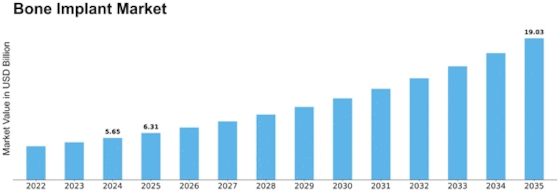

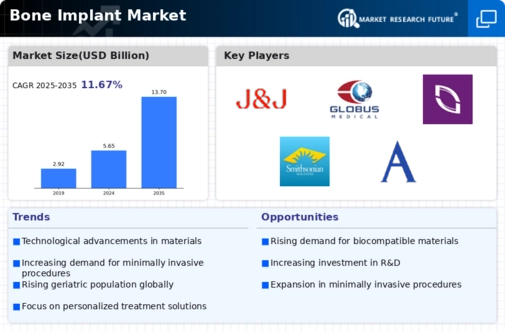
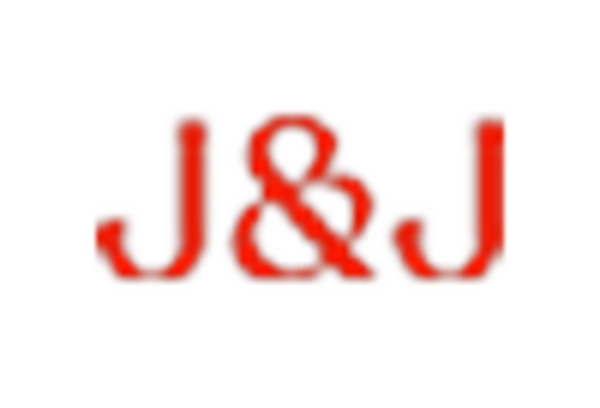
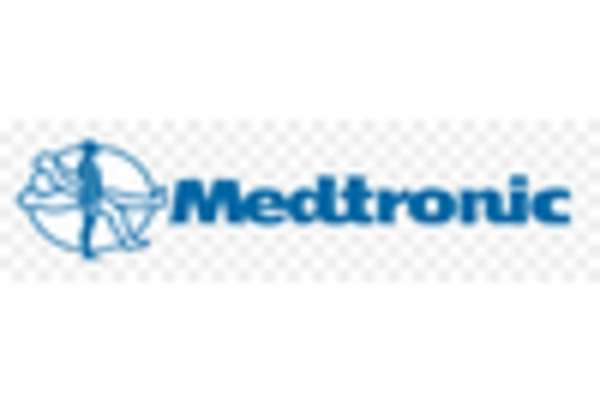


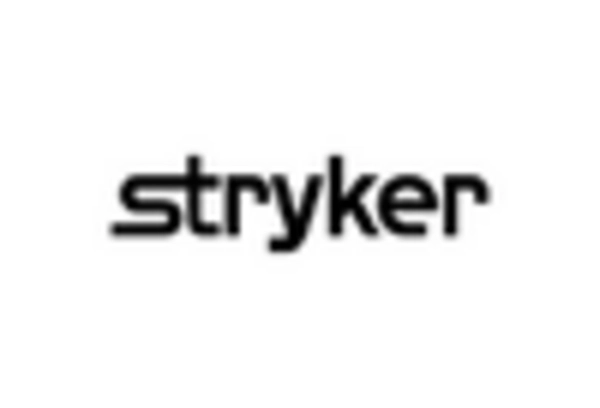


Leave a Comment